Topic outline
-
Special orientation sessions Lecture free sessions Entrepreneur survey Poster plan reports High impact presentations Learn from entrepreneurs Each course starts with a special orientation session
Each course starts with an orientation session that is designed to set up the teaching and learning arrangements for the whole course. In particular, this orientation session will take you through a series of exercises that are based on sound educational principles. These exercises contribute to developing a positive and interactive learning culture in this course, and include:
- forming groups
- groups select a team name, and members introduce themselves
- we identify student learning motivations and expectations
- teams and students are introduced to the whole class
- we explore key aspects of learning
- we identify the requirements of success in this course
- we review the learning purpose of each of the above steps
This session is based on research carried out in entrepreneurship classes, and is described in detail in the following paper that you can download through the UniSA library catalogue:
- Balan, P., Clark, M. & Restall, G. 2015, 'Preparing students for Flipped or Team-Based Learning methods', Education + Training, vol. 57, no. 6, pp. 639-657. (ERA A* Journal)
This paper has generated a lot of interest, and copies of the orientation session kit have been sent to more than 100 educators around the world in different discipline areas. The lecturer has also run workshops on this session at several international conferences and at universities in Australia, the US, UK and in the Middle East.
Although the session typically takes about 1 1/2 hours, this is a good time investment, because the subsequent sessions are very productive on account of the very positive, purposeful and collaborative learning culture that has been developed in the class.
Enter a lecture-free zone
Entrepreneurship course delivery is based on the principle that people learn more effectively through conversation and discussion, rather than being talked at.
A typical class is conducted using a series of practical application exercises where students (who are formed into permanent teams) are assigned questions to discuss within their teams, and are then asked to present their conclusions to the whole class. Teams are encouraged to ask questions of each other, and the lecturer also asks questions relating to team contributions. This leads to a general classroom discussion on the particular questions. The lecturer develops and expands on the points raised by the different teams, and introduces relevant insights and examples. Finally, the lecturer summarises the key points.
This approach means that topics are discussed in the team before they are discussed in the whole class, so that students are more confident in presenting the conclusions of their team. This also means that students learn from the observations and comments from their colleagues. In this way, students learn from the discussions within their team, from the contributions of other teams, and from the summing up that the lecturer provides.
This teaching method means that it is not realistic to record a session in the traditional manner, as there is no formal lecture, and it is not possible to record the conversations at the team levels or in the classroom. Such a recording would be largely inaudible and would be very boring. However, the lecturer aims to summarise the discussion for each exercise, and record the wrap-up summary comments for external students, and for reference for City West students. This results in much shorter recordings that capture the key points in a discussion.
A special survey to learn about the personal characteristics of entrepreneurs - and about yourself
- Students in the Entrepreneurial Enterprises course complete an online questionnaire to investigate the personal characteristics of entrepreneurs. Students also learn something about themselves as a potential entrepreneur.
- Students taking the Entrepreneurial Commercialisation for New Ventures course benefit from the same approach to learn about themselves as consumers and about ways to assess potential consumers for innovative products and services.
- In the Creativity and Innovation course, students use this method to learn about their own creative abilities.
The same approach is used in each course, and is described below for the Entrepreneurial Enterprises course:
First, you complete an online questionnaire
You are invited to complete an online questionnaire (before the start of the lecture series) that includes questions that have been developed and validated by international researchers and implement a model for studying entrepreneurial values, attitudes, behaviours and moderating factors. These questions are used to develop an improved understanding of the characteristics, competencies, and behaviours of entrepreneurs.
You get a confidential and personalised benchmark report
Before the second lecture session, you will be sent a detailed 11-page benchmark report that shows your responses, compared with those of the whole class.
This report is confidential to you, and you will not have to show it to anyone else.
This image shows the research model that is used in this exercise. It includes entrepreneurial values, entrepreneurial attitudes, entrepreneurial intentions and entrepreneurial behaviour, with moderating factors including entrepreneurial self-efficacy, and the influence of others.
This image also shows the overview summary chart of entrepreneurial values.
This image shows the details of results that you receive. It displays your response for each question, and the class range of responses (the mean plus and minus one standard deviation) for that question.
This information provides a valuable basis for understanding your own responses, as well as the profile for the whole class.
You will gain personal insights
The report is used as the basis for discussion in the session that deals with "the entrepreneurial mind", and we do a number of exercises in the class that help you get insights into your own values, attitudes, capabilities and intentions, relative to the other students in the class. This will give you food for thought, and will challenge you to think about developing your own entrepreneurial characteristics.
You will also learn about theories and models relating to entrepreneurial characteristics
This approach is a way of bringing to life leading-edge research into the personal characteristics of entrepreneurs. The research model that is discussed is one that is used in current research in this field, and the measures that are reviewed are ones that many researchers are using to gain a better understanding of "what makes entrepreneurs tick?"
We also use this report in a similar manner in the session dealing with opportunity recognition.
This image shows a research model that is used to explore what entrepreneurs do (their behaviour) when they look for an identify a business opportunity.
This exercise also gives you an idea of the kind of research that University staff are carrying out with entrepreneurs.
This is the type of research that you might experiment with in an Honours year, and carry out for a Ph.D.
Poster plan reports support collaborative learning
The major assessments for entrepreneurship courses are team reports. They are designed so that you experience the most powerful component in learning - getting immediate feedback on your work. This innovation involves two important changes to the conventional approach where your team produces a 3000 word or 4000 word report that is submitted for assessment at the end of the course.
- The first innovation is that your team report is submitted as a poster plan
- The second innovation is that you present your team report to your class, you see the work that other teams have produced, and you get immediate feedback on your own work.
You submit your team report as a poster plan
This means that, instead of producing a lengthy document, your team produces a plan that fits onto two A3-size pages. You are given a template for this document, and detailed guidelines regarding the content and layout, and you are shown an example of this type of report during the lecture sessions (also shown here).
This is a challenging format; you have to decide what information is relevant, and what you leave out. You also have to work out how to present your report as a persuasive selling document that will be reviewed by your peers (as well as by the lecturer).
You attend a project presentation and review session
You submit your plan, and day a half later you attend a session where your plan is posted on the wall of the lecture theatre - this is the most value-adding part of doing the project report.
You are given time to review the work that the other teams have done. You are given an assessment form to help your team record what is good about the work that other teams have done, and what could be improved. (These comments are sent to teams after the end of this session as anonymous feedback)
This is followed by a question and answer session. Your team asks questions about the work that others have done, and you respond to questions from other teams.
This leads into a general discussion about the reports, and the ways that different teams responded to the same challenge.
- You learn by seeing what other teams have done with the same business idea, and from the creative ideas that they have described in their reports. You also learn by seeing what they have included in their report, and what they have not.
- You get practice in evaluating the work that other students have done. This task is made easier because all teams deal with the same business idea, and use the same format for their reports, so you know what to look for.
- You learn by getting immediate feedback from your colleagues through the questions that they ask during the presentation and review session,. You also get their anonymous comments sent to you by e-mail after the session (together with the lecturer's comments).
High impact presentations
A key requirement for an entrepreneur (and a useful capability for anyone) is to know how to deliver a high impact verbal presentation in one minute or less. This is frequently referred to as the "elevator pitch". You may wish to check some of the many sources of information about this.
At the presentation review and feedback session, a team representative is asked to give a one-minute "pitch" on their work. The aim is to interest the listener so that they are willing to have a follow-up meeting to discuss the details of the report. These short presentations give the whole class an overview of the reports before teams assess other reports for discussion.
This is an important exercise, because it is much more likely for anyone to make a one-minute presentation in a professional or social situation (than a presentation of say 5 to 15 minutes). In addition, it is harder to make a high-impact short presentation, as it takes more thought and practice than a longer one. Check the separate page (below) that includes suggestions for making an effective elevator pitch.
Learn from entrepreneurs
Practising entrepreneurs speak about the challenges of starting their own business ventures at the Enterprise Forum.
Enterprise Forum sessions are usually scheduled on Friday lunchtimes (non-teaching period), and are open to all students and University Alumni.
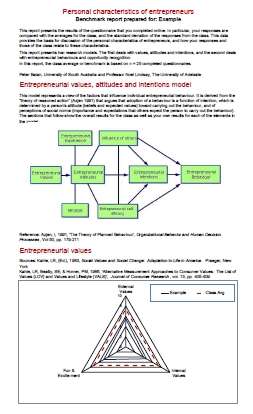
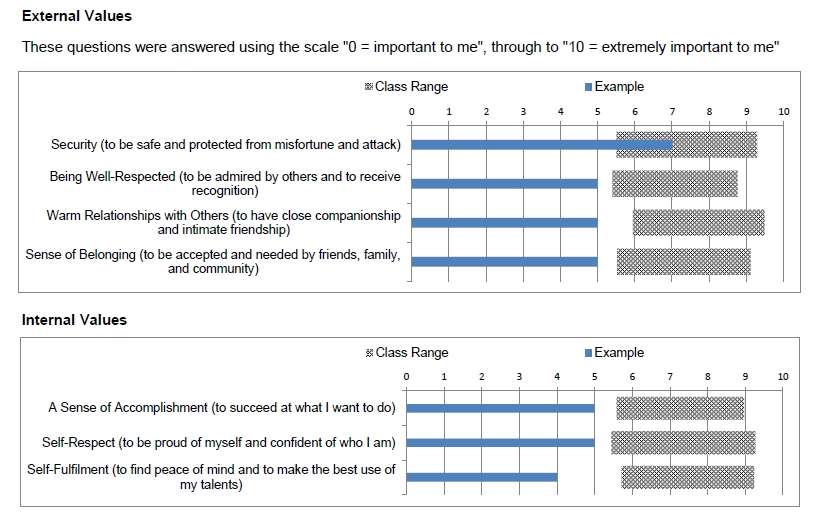
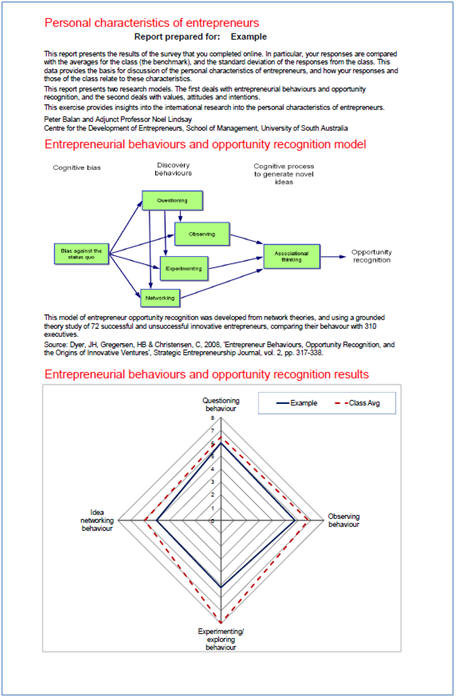
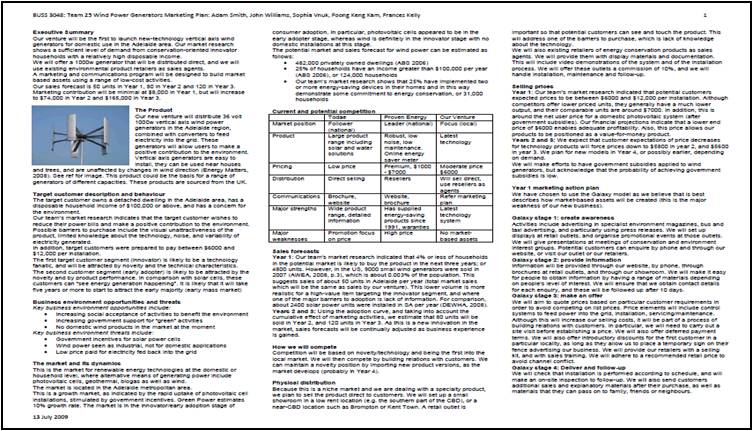
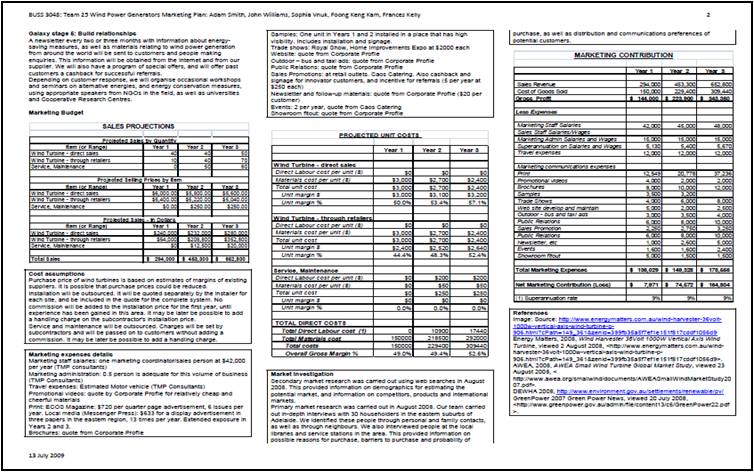
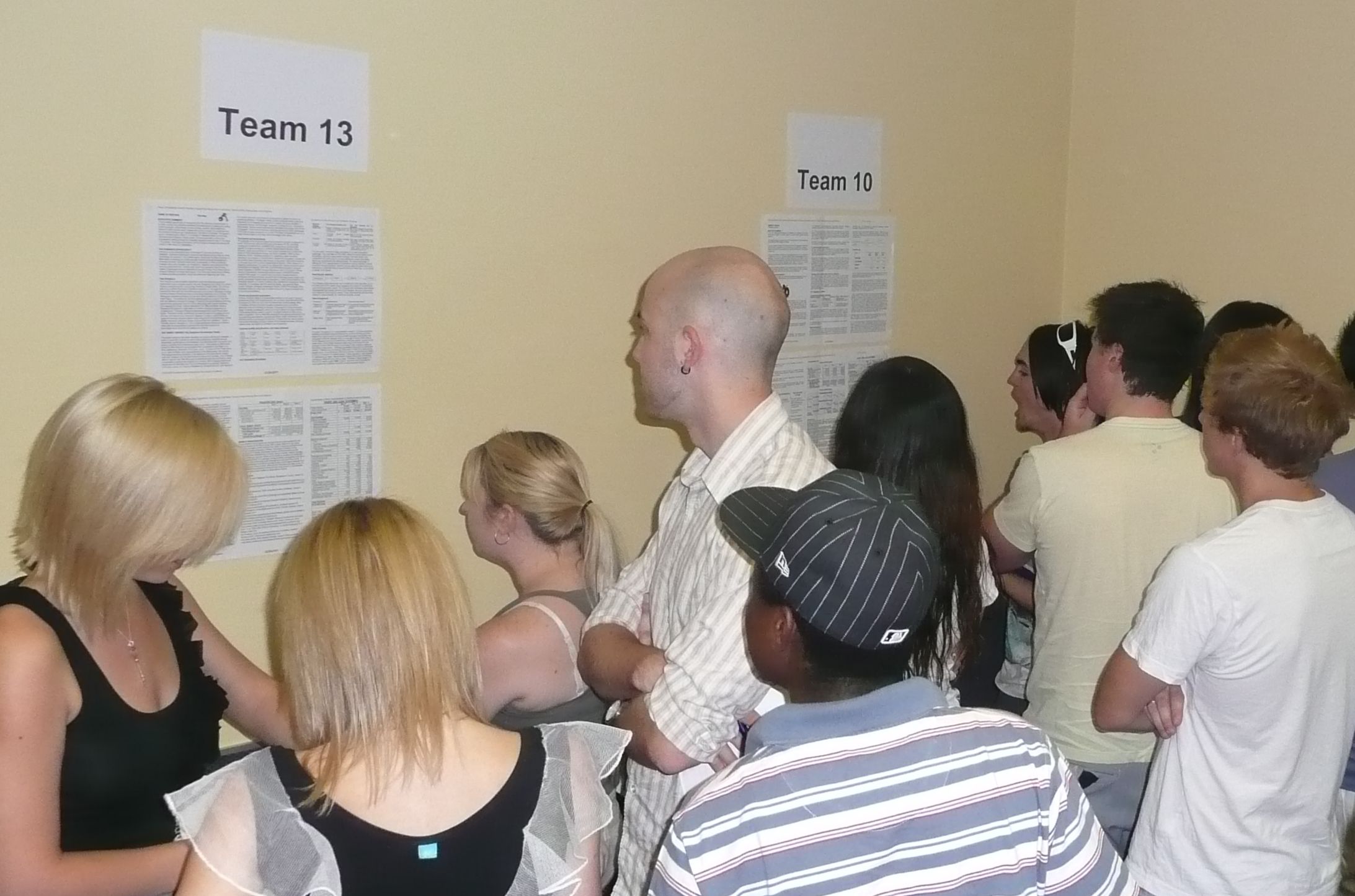
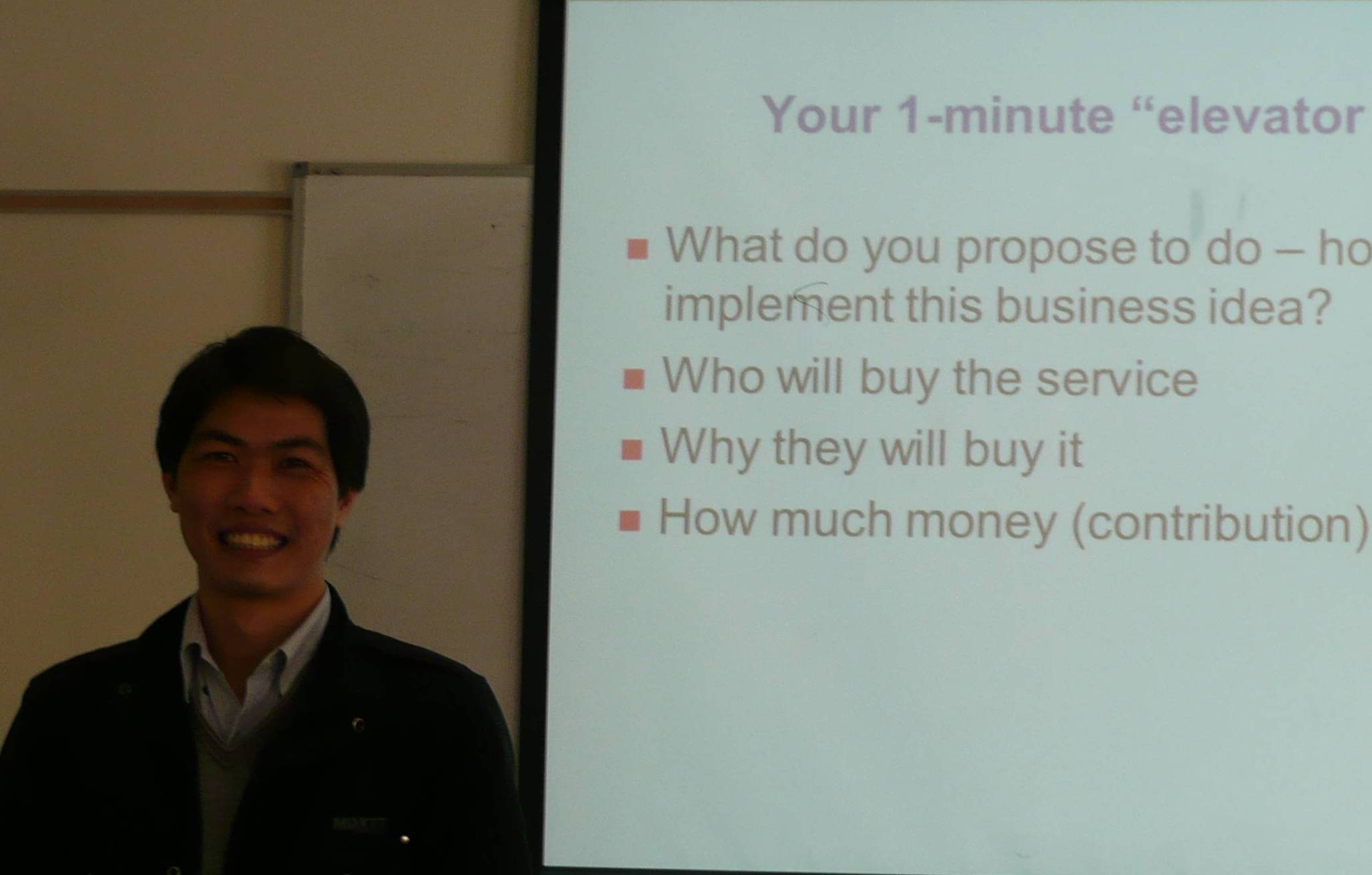 A key requirement for an entrepreneur (and a useful capability for anyone) is to know how to deliver a high impact verbal presentation in one minute or less. This is frequently referred to as the "elevator pitch".
A key requirement for an entrepreneur (and a useful capability for anyone) is to know how to deliver a high impact verbal presentation in one minute or less. This is frequently referred to as the "elevator pitch".